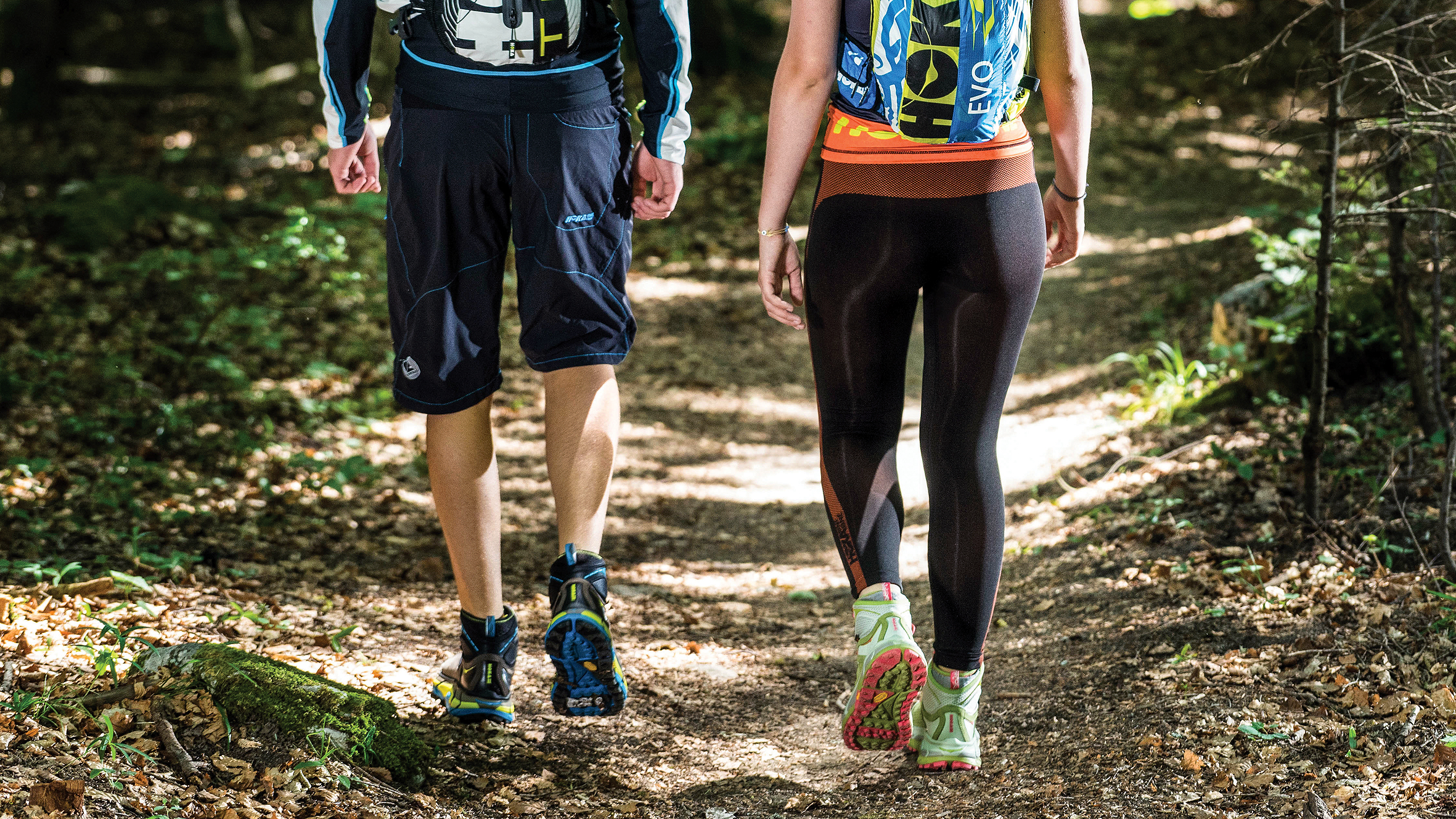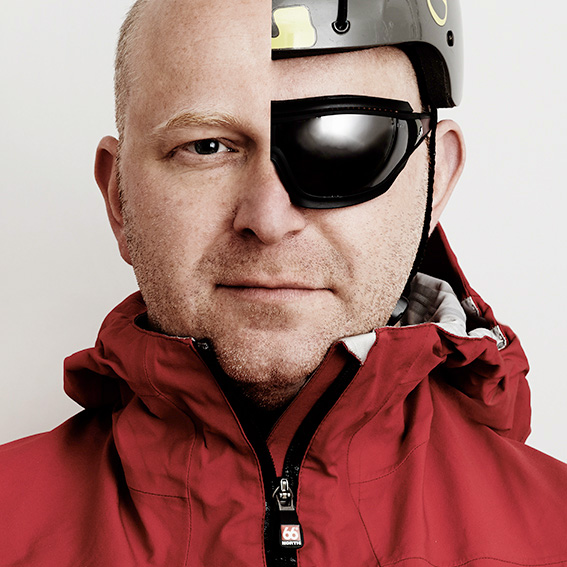Guide to hiking: from gentle hill walking to competitive peak bagging
10 tips to help you make sure you have happy trails, wherever you roam..


The call of the wild, the sound of the sea, the sun setting over a placid lake fringed with pines - all of these can be yours for the price of a train ticket and a few minutes hiking.
The UK is particularly blessed with natural beauty, from rugged mountain scenes to surprisingly white-gold beaches, and there’s no reason to not go, get on your feet and get involved.
- Best women's walking shoes
- Best men's walking shoes
- Walking boots vs walking shoes: how to choose the right footwear for you
However, the outdoors isn’t all entirely plain sailing, so we’ve pulled together ten top tips to make sure you have happy trails, wherever you roam..
1. Pick a place
Selecting a hike that’ll be fun for all involved does take a bit of forethought - travel times, overall group fitness and experience all narrow down your options. Don’t be tempted to push the boundaries too far, if at all, especially if you’re in a group or unfamiliar with the people involved.
2. Choose your moment
The world over, but especially in the UK, weather is a big part of what’s possible on any day, so get studying those forecasts. Nipping up a ridge like Crib Goch in gale force winds is a very bad idea, while the normally placid Jurassic coast cliff tops change your perspective fast in a big electrical storm.
Even without extreme weather on the cards, a good eye on the forecast means you’ll know whether to pack sunscreen or snow goggles to keep the hail off.

3. Get geared up
Don’t stint on the quality of your gear, and make sure it’s appropriate for the conditions - in the UK, always carry a waterproof shell and some extra insulation, unless it’s the nationally nominated heatwave week.
Get all the latest news, reviews, deals and buying guides on gorgeous tech, home and active products from the T3 experts
Be wary of city-orientated ‘technical’ jackets and shells, which often fail the sometimes stern test of UK weather. Mid-layers are less critical, but a good jacket is a happy thing in horizontal hail.
Make sure your rucksack is the right size for your back length, and is comfy enough for all day use - don’t be swayed by bells, whistles and funky suspension systems - whatever feels right to you is the best choice.
Here are a selection of buying guides to make sure you're using the right kit:
4. Light is…
A classic mountaineering phrase, light is usually right, in the case of hiking carrying extra heavy junk that you don't need. Keep it simple, pared down, and leave all those things that might-just-maybe come in handy, like Kickstarter tin openers, survival saws and the third spare set of head torch batteries in the car.
Don’t be afraid to customise your gear by removing stuff you know you don’t need, like those weird attachments on your rucksack that might be for holding snowboards, and any excess wads of washing labels in Hungarian - every gram helps.

5. Put the boot in
Converse are not ideal for summiting the Ben in full winter, and flip flops will make you miserable after a few miles, so what to wear? Trainers and approach shoes might serve for shorter rambles, but for anything more serious it’s best to go trad.
The answer is boots, simples. They’ll protect your ankles from casual twists and tweaks on uneven ground, and the rest of your foot from pointy things, as well as keeping the mud and water mostly out.
Lighter summer boots are perfect for the hotter months, while a decent pair of stiff B0-B1 rated mountain boots will see you right through winter without a wimper.
Make sure you check out T3's extensive footwear buying guides:
6. Water, water, everywhere
The fitter you are the less water you’ll need, but at least a litre is a good rule of thumb, although in the summer that can easily double. Carrying water is a controversial question - although many swear by the hydration bladder ease of use and convenience, the simple versatility of a wide-neck Nalgene or Hydro Flask has a lot of benefits too.
Whichever you choose, remember to use it little and often! Remember that high mountain streams in the UK are usually safe to drink, so check the map before carrying several litres of tap water up a hill to what is effectively a natural spring.

7. Get navigating
Even on an easy hike along well-marked footpaths, it’s a good idea to carry a map and compass to keep track of your progress towards the pub. Once off the beaten track being able to use a map and compass is a vital skill, and one well worth refining.
Of course, GPS units (including watch-based versions) and smartphone mapping like ViewRanger are a brilliant addition for super-quick checks and pinpoint accuracy in whiteouts, as well as sharing your journey on Facebook later. Obviously batteries can die suddenly in the cold, even if you’ve juiced up before leaving, so having a paper backup map is vital.
8. Pick a pace
Tempting as it is to charge off into the distance and get the miles in, if you’re walking with a group always get the slowest to set the pace, or they’ll be exhausted way too early.
Here is where checking the map or stopping to drink are handy pace setters, letting everyone have a quick breather without causing a massive delay. A steady pace that lets you observe and enjoy nature will see the miles drop off with ease, rather than slogging away to deliver a Personal Best time up Snowdon.

9. See the light
For any serious outdoor hiking trip it’s always worth packing a torch, in case of emergency or simple miscalculation of your finish time. In summer the longer days make this unlikely, but shorter Winter days can easily see a last few miles of walking as dusk falls.
In Winter a proper headtorch is a good bet, but for emergency use the tiny but powerful Petzl E-Lite is almost unbeatable at 26 grams. Chuck it in your rucksack and forget it - until you need it...
- Best flashlight: our pick of the best LED torch to buy
- The best head torches for running: avoid potholes on those dark runs
10. Have fun
Hiking is arguably the most accessible outdoor activity there is, and gets you out into utterly stunning natural vistas that will soothe your city-dulled soul. Enjoy, and treasure those moments, because they’ll stay with you for years.

Mark Mayne has been covering tech, gadgets and outdoor innovation for longer than he can remember. A keen climber, mountaineer and scuba diver, he is also a dedicated weather enthusiast and flapjack consumption expert.